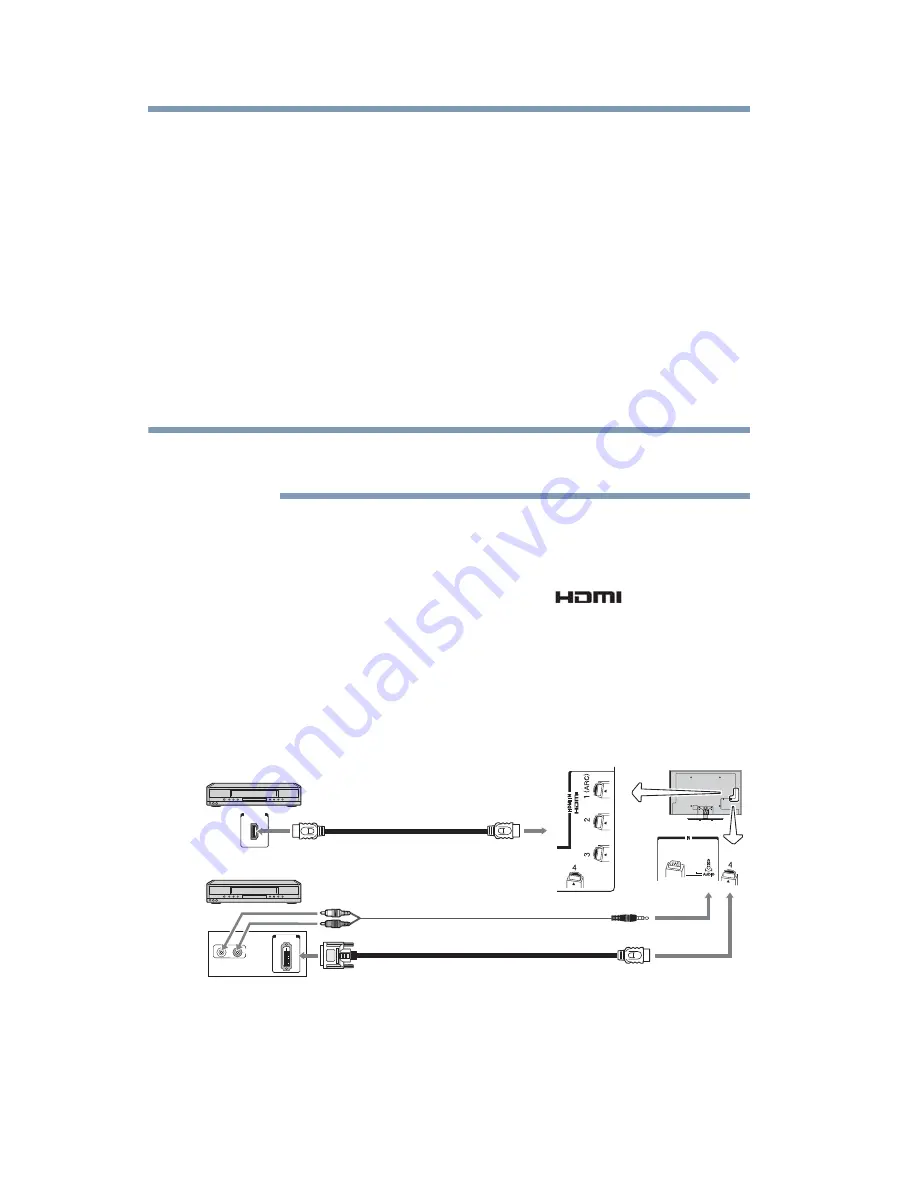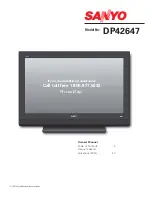
36
Connecting Your TV
Connecting an HDMI® or DVI device to the HDMI® input
uncompressed digital video from a DVI (Digital Visual Interface)
source device.
This input is designed to accept HDCP (High- Bandwidth
Digital-Content Protection) program material in digital form from
EIA/CEA-861-D– compliant[1] consumer electronic devices (such
as a set-top box or DVD player with HDMI
®
or DVI output).
The HDMI
®
input can accept and display VGA, SVGA, XGA,
WXGA, SXGA, 480i (60Hz), 480p (60Hz), 720p (60Hz), 1080i
(60Hz), and 1080p (24Hz/60Hz) signal formats. For detailed signal
specifications, see
“HDMI® signal formats” on page 192
.
The supported Audio formats are Linear PCM and Dolby
®
Digital,
sampling rate 32/44.1/ 48 kHz.
To connect a PC to the HDMI
®
input, see
“Connect a computer to the
TV’s HDMI® terminal” on page 41
.
To connect an HDMI
®
device, you will need one HDMI
®
cable
(type A connector) per HDMI
®
device:
❖
For proper operation, it is recommended that you use an
HDMI
®
cable with the HDMI
®
Logo (
).
❖
To display an 1080ip/60Hz signal format, you will need a High
Speed HDMI
®
cable. A conventional HDMI
®
/DVI cable may
not work properly.
❖
HDMI
®
cables transfer both video and audio. Separate analog
audio cables are not required (see illustration).
(Sample Illustration) L6200U/L7200U Series—Connecting an
HDMI
®
or DVI device to the HDMI
®
Input
To view the HDMI
®
device video:
Select
HDMI 1
,
HDMI 2
,
HDMI 3
or
HDMI 4
video input source
on the TV. (Press the
INPUT
button on the remote control. For
NOTE
TV back panel
HDMI
OUT
DVI /HDCP
OUT
AUDIO
R
L
OUT
HDMI device
DVI device
HDMI cable
Analog audio cable
HDMI-
t
o-DVI adap
t
e
r
cable
HDMI 4
HDMI 4
PC / COLOR STREAM HD 2
PC / COLOR STREAM HD 2










































